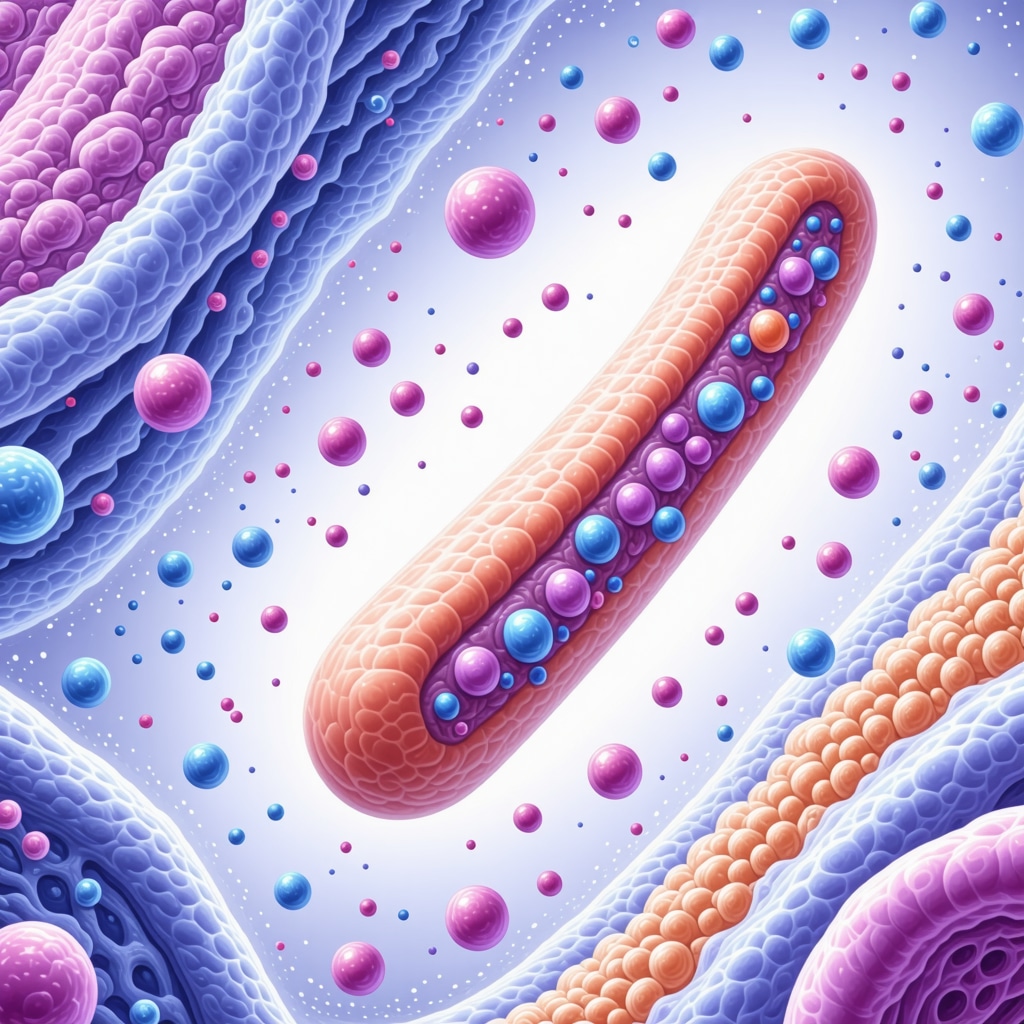Understanding Tirzepatide’s Mechanistic Synergy for Enhanced Fat Loss
Obesity medicine specialists in New Jersey are increasingly recognizing tirzepatide as a groundbreaking pharmacological agent that harnesses dual incretin receptor agonism to potentiate fat loss. As a synthetic peptide that activates both glucose-dependent insulinotropic polypeptide (GIP) and glucagon-like peptide-1 (GLP-1) receptors, tirzepatide orchestrates a multifaceted metabolic response exceeding that of traditional GLP-1 agonists. This dual-action mechanism not only improves glycemic control but also profoundly modulates appetite regulation, energy expenditure, and adipose tissue metabolism, thereby facilitating substantial and sustained weight reduction in patients with obesity.
Clinical Evidence from NJ Obesity Medicine Practices: Efficacy and Patient Outcomes
Local experts report that tirzepatide administration under physician supervision yields impressive fat loss outcomes, corroborated by recent randomized controlled trials published in The New England Journal of Medicine. These studies demonstrate dose-dependent reductions in body weight, with some subjects experiencing upwards of 20% total weight loss. Importantly, NJ clinicians emphasize the necessity of integrating tirzepatide therapy with lifestyle modifications, including tailored nutrition and physical activity plans, to optimize fat loss efficacy and enhance metabolic health markers.
How Does Tirzepatide Specifically Target Fat Reduction Beyond Weight Loss?
While weight loss encompasses overall body mass reduction, tirzepatide’s unique pharmacodynamics preferentially attenuate visceral adiposity, which is closely linked to cardiometabolic risk. By enhancing insulin sensitivity and reducing hepatic steatosis, tirzepatide facilitates a metabolic shift that promotes lipolysis in white adipose tissue. Furthermore, the drug’s influence on central appetite pathways reduces caloric intake, while peripheral effects enhance energy utilization, culminating in targeted fat mass decrement rather than mere water or lean mass loss.
What Are the Nuances and Challenges in Tirzepatide Administration for Fat Loss in NJ Clinical Settings?
Expert practitioners in New Jersey highlight several nuanced considerations when prescribing tirzepatide. Patient selection criteria must meticulously assess comorbidities such as type 2 diabetes, gastrointestinal tolerance, and potential contraindications. Dosage titration demands careful monitoring to mitigate adverse events like nausea or hypoglycemia. Moreover, long-term adherence and behavioral support are critical to sustaining fat loss gains. NJ obesity specialists recommend leveraging comprehensive treatment programs that combine physician-guided tirzepatide injections with consistent patient education and follow-up.
Integrating Tirzepatide into Comprehensive Obesity Medicine Protocols
Tirzepatide’s role in NJ obesity medicine extends beyond pharmacotherapy; it forms a core component of multidisciplinary weight management strategies. Physicians advocate for synchronized interventions that integrate dietary modifications, behavioral counseling, and physical activity regimens alongside weekly tirzepatide dosing. This synergistic approach enhances treatment adherence and metabolic outcomes, reflecting best practices endorsed by leading endocrinology societies.
For patients eager to explore expert-guided tirzepatide treatments, visit our comprehensive resource on safe tirzepatide injections in NJ and initiate a personalized weight loss journey with trusted obesity medicine physicians.
Optimizing Tirzepatide Dosage: Balancing Efficacy and Safety in NJ Practices
In New Jersey obesity clinics, titrating tirzepatide dosage is a critical aspect to maximize fat loss benefits while minimizing adverse effects. Optimal dosing protocols typically start with a low dose to assess individual tolerance, gradually increasing to therapeutic levels that promote sustained weight reduction. Clinicians emphasize rigorous patient monitoring during this escalation phase to identify gastrointestinal side effects such as nausea, vomiting, or diarrhea, which are commonly reported but generally transient. Adapting dosing schedules and providing supportive care can improve patient adherence and outcomes significantly.
Furthermore, NJ physicians often tailor treatment plans by integrating tirzepatide with adjunct lifestyle interventions, recognizing that pharmacotherapy alone may not suffice for long-term weight management. This holistic approach ensures that patients experience not only fat loss but also improvements in metabolic health markers, including blood pressure and lipid profiles.
Exploring the Role of Tirzepatide in Modulating Energy Homeostasis and Fat Metabolism
Tirzepatide’s dual agonism mechanism uniquely influences energy homeostasis by enhancing insulin sensitivity and promoting favorable shifts in adipocyte function. According to a recent review published in Nature Reviews Endocrinology, tirzepatide activates signaling pathways that increase mitochondrial biogenesis and fatty acid oxidation in adipose tissue, thus contributing to efficient fat utilization and reduced fat mass. These cellular effects complement its appetite-suppressing actions, creating a comprehensive metabolic milieu conducive to sustainable fat loss.
How Can NJ Clinicians Integrate Tirzepatide with Emerging Weight Loss Technologies to Enhance Patient Outcomes?
As obesity medicine evolves, New Jersey practitioners face the exciting challenge of combining pharmacological advances like tirzepatide with innovative tools such as continuous glucose monitoring (CGM) and digital health coaching. Integrating these technologies allows for real-time metabolic feedback and personalized behavioral adjustments, potentially augmenting tirzepatide’s efficacy. For instance, CGM can help identify glycemic patterns that inform dietary modifications, while mobile apps facilitate adherence to injection schedules and lifestyle changes. This integrative model represents a future-forward strategy to optimize fat loss interventions.
Clinicians interested in adopting such comprehensive care models can learn more about physician-supervised weight loss programs in NJ that combine tirzepatide with behavioral and technological support by visiting our detailed guide on weight loss programs integrating tirzepatide and lifestyle changes.
Addressing Patient Variability: Genetic and Lifestyle Factors Impacting Tirzepatide Response
Individual differences in genetics, microbiome composition, and lifestyle habits significantly influence the magnitude and durability of fat loss with tirzepatide treatment. Emerging evidence suggests that polymorphisms in genes related to incretin receptors and metabolic pathways may modulate patient responsiveness. NJ obesity medicine experts advocate for personalized medicine approaches, incorporating genetic testing and comprehensive lifestyle assessments to predict and optimize therapeutic outcomes.
Moreover, patient education on dietary patterns, physical activity, and behavioral strategies remains paramount to complement pharmacotherapy. This multidimensional approach aligns with current best practices in obesity medicine, enhancing patient empowerment and treatment success.
For patients and providers seeking expert support, our contact page offers access to specialists proficient in tailored tirzepatide weight loss plans.
Leveraging Pharmacogenomics to Enhance Tirzepatide Efficacy in Personalized Fat Loss
In the cutting-edge landscape of obesity treatment, New Jersey specialists are increasingly exploring the integration of pharmacogenomic data to tailor tirzepatide therapy. Variations in genes encoding incretin receptors, particularly GLP-1R and GIPR, as well as downstream signaling molecules, have been shown to influence patients’ metabolic responses. Incorporating genetic profiling into clinical decision-making allows clinicians to predict efficacy, optimize dosing, and anticipate side effect profiles, thus elevating the precision of fat loss interventions.
For example, polymorphisms in the GLP-1 receptor gene (GLP1R) may alter receptor sensitivity, impacting appetite suppression and insulinotropic effects. Addressing these genetic nuances can guide clinicians in adjusting tirzepatide regimens or considering adjunct therapies to overcome suboptimal responses.
What Genomic Markers Should NJ Obesity Specialists Consider When Personalizing Tirzepatide Treatment?
Clinicians focusing on personalized obesity medicine should prioritize testing for variants in GLP1R, GIPR, and genes involved in mitochondrial function such as PPARGC1A. These markers have been correlated with differential responses to incretin-based therapies, affecting both weight loss magnitude and metabolic improvements. Moreover, integrating microbiome profiling may further refine treatment by elucidating gut flora interactions with incretin pathways.
Emerging evidence from peer-reviewed pharmacogenomics research underscores the benefit of this tailored approach, demonstrating improved patient outcomes and reduced adverse reactions.
Innovative Adjuncts: Combining Tirzepatide with Nutraceuticals and Lifestyle Modulators for Synergistic Fat Reduction
Beyond pharmacogenomics, NJ obesity medicine practitioners are investigating the synergistic potential of tirzepatide combined with targeted nutraceuticals and lifestyle modulators. Compounds such as omega-3 fatty acids, polyphenols, and probiotics that influence mitochondrial biogenesis and inflammation may amplify tirzepatide’s metabolic effects.
For instance, supplementation with omega-3s has been shown to enhance fatty acid oxidation, complementing tirzepatide’s promotion of mitochondrial activity. Concurrently, structured intermittent fasting protocols may potentiate incretin secretion and insulin sensitivity, providing a multifactorial enhancement to fat loss strategies.
Harnessing Advanced Metabolic Imaging to Monitor Tirzepatide-Induced Adipose Tissue Remodeling
One frontier gaining traction in NJ clinical research is the application of advanced imaging modalities such as magnetic resonance spectroscopy (MRS) and positron emission tomography (PET) to noninvasively assess adipose tissue composition changes during tirzepatide therapy. These techniques provide granular insights into shifts from white to beige adipose tissue and mitochondrial density changes, which correlate with metabolic improvements.
Such imaging biomarkers enable clinicians to objectively evaluate treatment efficacy beyond conventional metrics like body weight or BMI, facilitating early therapeutic adjustments and personalized care optimization.

Integrating Tirzepatide in the Era of Digital Therapeutics: Enhancing Patient Engagement and Outcome Tracking
The convergence of pharmacotherapy and digital health is transforming obesity management in New Jersey. Digital therapeutics platforms that incorporate tirzepatide administration schedules, symptom tracking, and real-time biometric data capture empower patients and providers alike. Through artificial intelligence-driven analytics, these platforms can identify patterns predictive of therapeutic response or adverse effects, enabling proactive intervention.
By synchronizing tirzepatide treatment with digital coaching and continuous glucose monitoring, NJ clinicians can foster sustained behavioral change, optimize metabolic control, and elevate long-term fat loss success.
To delve deeper into these integrated treatment paradigms and collaborate with experts pioneering personalized tirzepatide protocols, contact our specialized NJ obesity medicine team and begin your advanced fat loss journey today.
Decoding the Intricacies of Tirzepatide’s Impact on Adipocyte Phenotype and Metabolic Flexibility
Emerging research in New Jersey’s obesity medicine sphere elucidates tirzepatide’s nuanced effects on adipocyte plasticity, fostering a phenotypic shift from energy-storing white adipocytes toward metabolically active beige and brown adipocytes. This transdifferentiation enhances mitochondrial density and uncoupling protein 1 (UCP1) expression, thereby augmenting non-shivering thermogenesis and improving metabolic flexibility. Such cellular remodeling underpins tirzepatide’s capacity to catalyze sustained fat oxidation independent of caloric restriction, positioning it as a revolutionary agent in combating adiposity at a cellular level.
Precision Medicine in Practice: Leveraging Multi-Omics for Tailored Tirzepatide Regimens
Advanced NJ clinicians are increasingly incorporating multi-omics approaches—including genomics, transcriptomics, and metabolomics—to delineate patient-specific metabolic phenotypes that predict tirzepatide responsiveness. By integrating high-dimensional data analytics, providers can stratify patients into distinct metabolic endotypes, enabling customization of dosing schemas and combination therapies. This paradigm shift from empirical treatment to data-driven precision medicine promises to optimize efficacy while minimizing adverse events, thus revolutionizing obesity therapeutics.
How Can Integrating Metabolomic Profiles Enhance Tirzepatide Treatment Outcomes in Complex Obesity Cases?
Metabolomic profiling offers granular insight into individual substrate utilization patterns, inflammatory milieu, and mitochondrial function status. NJ obesity specialists utilizing this modality can identify metabolic bottlenecks or compensatory pathways that may blunt tirzepatide efficacy. For example, elevated branched-chain amino acid metabolites correlate with insulin resistance and may necessitate adjunctive interventions to sensitize target tissues prior to or concurrent with tirzepatide therapy. Consequently, metabolomics informs both patient selection and dynamic treatment adjustments, fostering superior fat loss outcomes.
For deeper expertise on integrating metabolomics in obesity management, consult the comprehensive review by Nature Metabolism, which delineates cutting-edge methodologies and clinical applications.
Harnessing Artificial Intelligence to Predict and Enhance Tirzepatide Response Trajectories
Incorporating machine learning algorithms within NJ clinical frameworks empowers clinicians to proactively forecast patient trajectories on tirzepatide, identifying early responders and those at risk for suboptimal outcomes or adverse effects. AI-driven predictive modeling utilizes longitudinal biometric, behavioral, and pharmacokinetic data to tailor intervention intensity and adjunctive support. This sophisticated approach not only refines patient engagement strategies but also streamlines resource allocation, ultimately enhancing the therapeutic index of tirzepatide in real-world clinical practice.
Exploring the Synergistic Potential of Tirzepatide with Bariatric Endoscopy and Device Therapies
Innovative NJ obesity medicine centers are pioneering combinatorial protocols that integrate tirzepatide with endoscopic sleeve gastroplasty and implantable devices such as gastric electrical stimulators. This multimodal strategy targets both neurohormonal appetite pathways and mechanical restriction, amplifying fat loss beyond monotherapy capabilities. Early pilot studies demonstrate promising additive effects on visceral adiposity reduction and cardiometabolic risk amelioration, heralding a new era of hybrid obesity interventions.
Clinicians interested in these avant-garde combinatorial approaches can engage with specialized NJ centers offering integrated treatment modalities.
Patient Empowerment Through Telemedicine and Real-Time Tirzepatide Monitoring
Advanced telehealth platforms in New Jersey now facilitate remote titration and monitoring of tirzepatide therapy, ensuring continuous clinical oversight while enhancing patient convenience. Real-time data capture on injection adherence, side effect profiles, and metabolic parameters allows for agile therapeutic adjustments. This model of decentralized care supports sustained engagement and optimizes long-term fat loss trajectories, particularly vital in populations facing access barriers.
To explore enrolling in NJ’s telemedicine-enabled tirzepatide programs, contact our expert obesity medicine team and leverage state-of-the-art digital health integration.
Expert Insights & Advanced Considerations
Precision Pharmacotherapy: Genetic and Metabolomic Profiling to Optimize Tirzepatide Response
Incorporating pharmacogenomics and multi-omics data into clinical protocols enables New Jersey obesity medicine specialists to tailor tirzepatide regimens with unprecedented precision. By identifying genetic polymorphisms in GLP1R and GIPR as well as metabolomic signatures linked to insulin resistance, clinicians can predict efficacy and mitigate side effects, elevating personalized fat loss outcomes beyond traditional dosing paradigms.
Synergistic Integration of Tirzepatide with Digital Therapeutics and Real-Time Monitoring
The fusion of tirzepatide therapy with advanced digital platforms, including continuous glucose monitoring and AI-driven behavioral coaching, fosters enhanced patient engagement and dynamic treatment adjustments. This integrative approach supports sustained metabolic improvements, adherence, and early identification of adverse events, reflecting a transformative model in NJ obesity medicine.
Adipose Tissue Remodeling and Metabolic Flexibility as Core Mechanisms of Sustained Fat Loss
Emerging evidence underscores tirzepatide’s role in inducing white-to-beige adipocyte transdifferentiation and enhancing mitochondrial biogenesis, increasing non-shivering thermogenesis and metabolic adaptability. This cellular remodeling represents a paradigm shift, targeting adiposity at its biological roots and promoting durable fat mass reduction independent of caloric intake alone.
Multimodal Protocols: Combining Tirzepatide with Bariatric Endoscopy and Nutraceuticals
Integrating pharmacological treatment with minimally invasive procedures and targeted nutraceutical supplementation is gaining momentum in NJ clinical settings. This multimodal strategy synergistically amplifies fat loss by addressing mechanical, hormonal, and inflammatory pathways, enabling comprehensive obesity management tailored to complex patient profiles.
Telemedicine-Enabled Physician Oversight Enhances Tirzepatide Safety and Accessibility
Leveraging telehealth to remotely monitor injection adherence, side effects, and metabolic markers ensures continuous physician support and timely intervention. This decentralized care model increases accessibility for NJ patients, particularly those with mobility or geographic constraints, while maintaining clinical rigor and optimizing therapeutic outcomes.
Curated Expert Resources
- Nature Reviews Endocrinology: A definitive source elucidating tirzepatide’s mechanistic pathways, including adipocyte remodeling and metabolic flexibility, crucial for understanding advanced therapeutic effects.
- The New England Journal of Medicine (NEJM): Landmark randomized controlled trials providing robust clinical evidence on tirzepatide’s efficacy and safety profiles in fat loss, widely referenced by NJ obesity specialists.
- Nature Metabolism: Comprehensive reviews on multi-omics approaches in obesity medicine, guiding integration of metabolomic profiling to personalize tirzepatide regimens effectively.
- Peer-Reviewed Pharmacogenomics Research Articles: Key studies detailing genetic variants impacting incretin receptor sensitivity, instrumental for precision medicine applications in tirzepatide therapy.
- Weight Loss Doctor NJ Resources: In-depth localized guides such as safe tirzepatide injections in NJ and weight loss programs integrating tirzepatide and lifestyle changes providing practical frameworks for physician-supervised fat loss.
Final Expert Perspective
Tirzepatide represents a revolutionary advancement in obesity medicine, particularly within New Jersey’s clinical landscape, by harnessing dual incretin receptor agonism that transcends conventional weight loss mechanisms. The intersection of genetic insights, metabolic imaging, digital therapeutics, and multimodal treatment strategies elevates fat loss approaches into a new era of precision and efficacy. For clinicians and patients alike, embracing these innovations alongside expert physician guidance ensures not only substantial fat reduction but also sustainable metabolic health improvements. To deepen your understanding and engage with leading NJ obesity medicine experts, explore our comprehensive resources or connect directly with our specialized team to begin a personalized tirzepatide journey tailored to your unique metabolic profile.


This article offers a comprehensive look into tirzepatide’s multifaceted role in fat loss, especially the emphasis on visceral adiposity reduction and cellular adipocyte remodeling. From my experience working with patients in NJ, I’ve seen how combining tirzepatide with advanced imaging techniques, like PET scans, helps us target treatment more effectively. The discussion on integrating digital therapeutics and metabolic profiling really resonates, as personalized approaches seem to be the future of obesity management.
Interestingly, genetics and microbiome factors play a significant role in individual responses. I wonder, how soon do you think pharmacogenomics will be routine in clinical practice to customize tirzepatide therapy? Additionally, what are some practical challenges clinicians face when implementing multi-omics data into everyday treatment plans? For those of us eager to adopt such personalized medicine, sharing success stories or hurdles faced could be really valuable for the community.